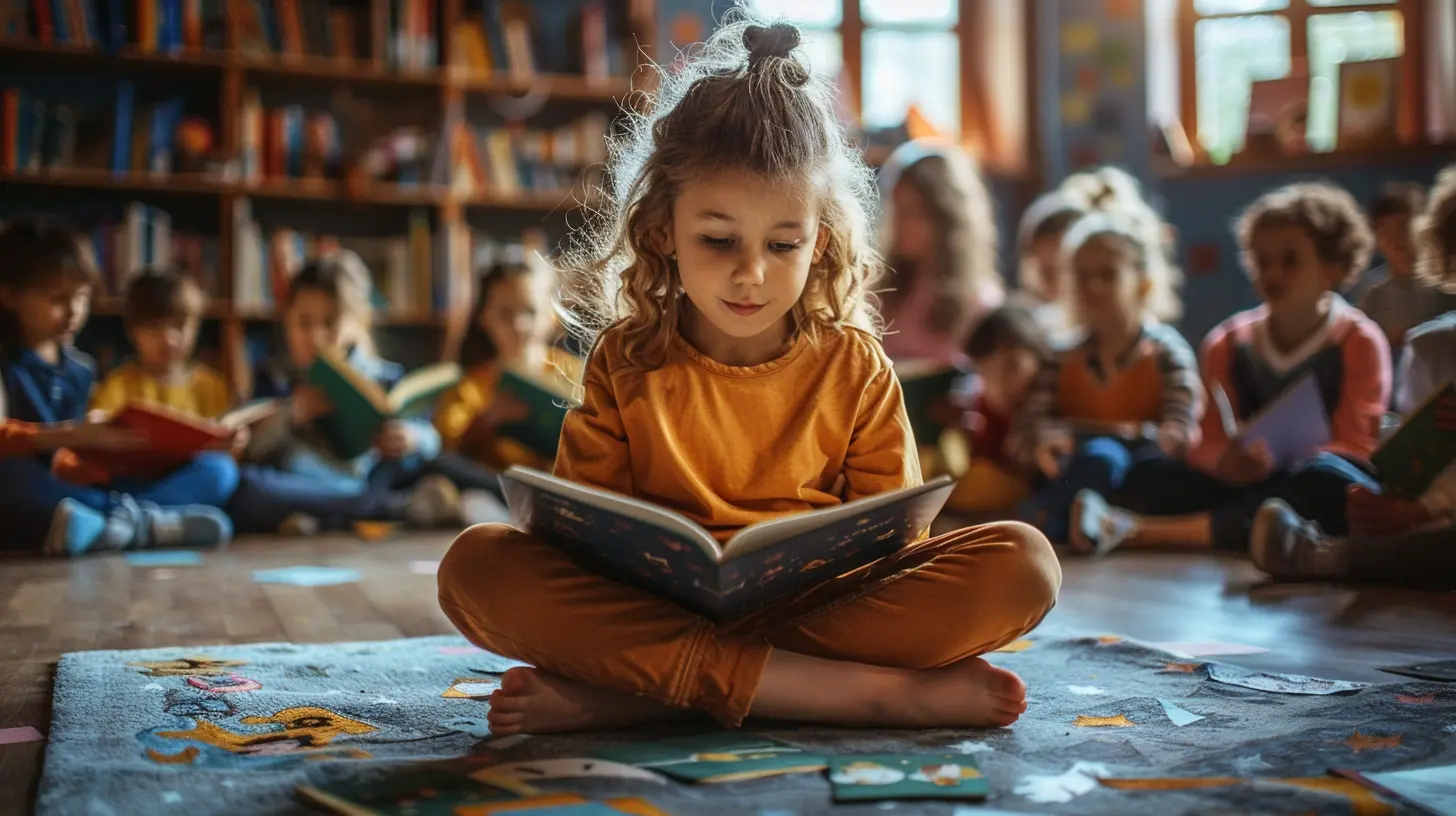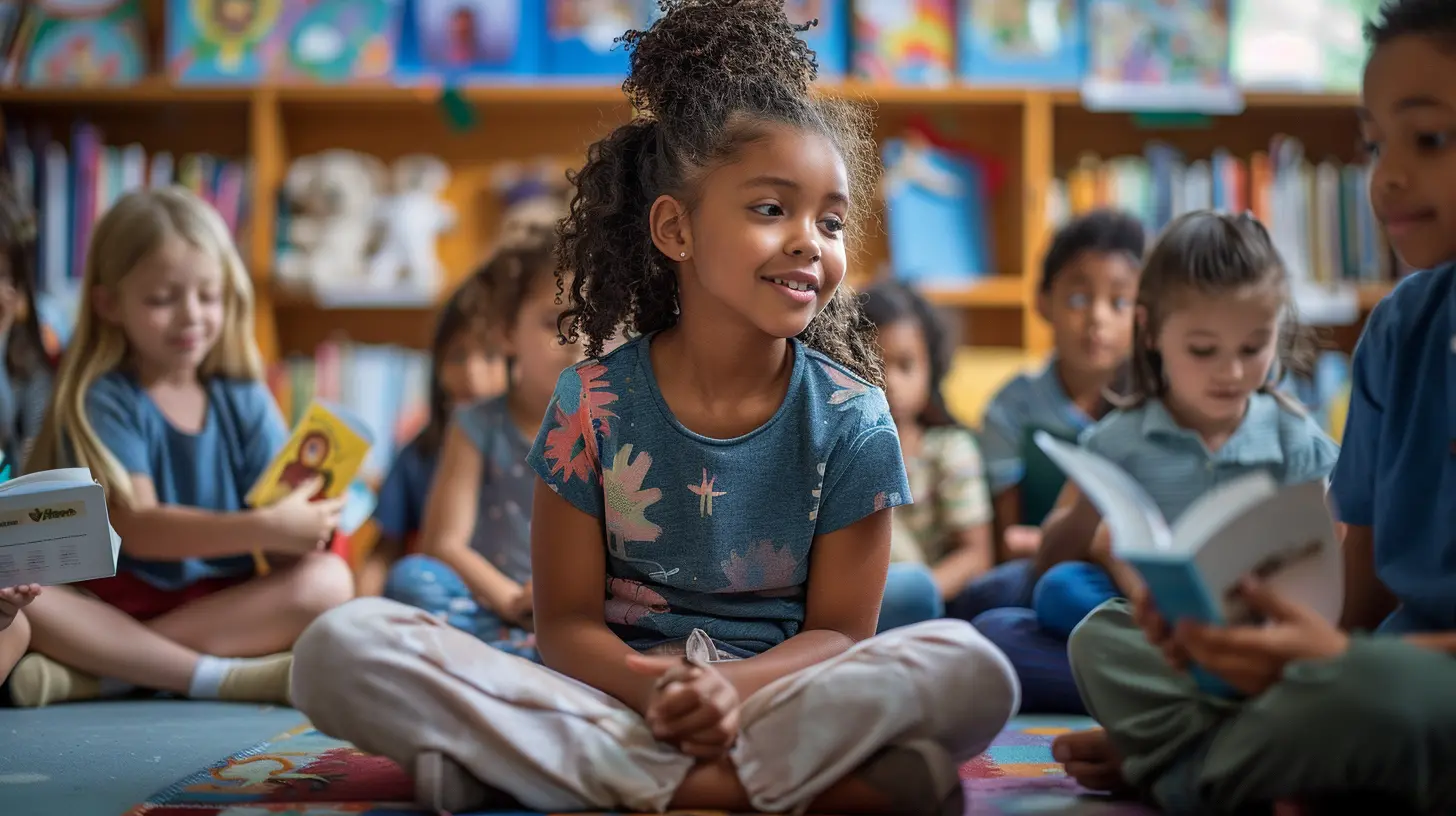The Power of Storytelling in the Classroom: A Comprehensive Guide
29 October 2025
Storytelling isn’t just for bedtime—it’s a powerful tool that can transform the learning experience in classrooms. Think about it: how often do we remember facts from a textbook compared to a captivating story someone once told us? That’s the magic of storytelling! It engages students, sparks their imagination, and helps them retain information in a way rote learning never could.
In this guide, we’ll break down the power of storytelling in education, why it works, and how you can seamlessly weave it into your classroom to create impactful learning moments.
Why Storytelling Works in Education
Storytelling has been around for centuries, long before books or digital media. It's how humans have historically passed down knowledge, morals, and traditions. But why is it particularly effective in a classroom setting?1. It Makes Learning More Memorable
Ever wondered why we can remember the plot of a movie we watched years ago but struggle to recall what we learned in school last week? That’s because stories create emotional connections, and emotions enhance memory. When students attach feelings to what they learn, they’re far more likely to remember it.2. Boosts Engagement and Attention
Let’s be honest—traditional lectures can sometimes feel like listening to a monotonous audiobook at double speed. But when lessons are framed as stories, students lean in, eager to know what happens next. It turns passive learning into an active experience.3. Enhances Critical Thinking and Creativity
Stories encourage students to think beyond the textbook. They foster curiosity, provoke discussions, and inspire creativity. When students are given the space to imagine, question, and analyze, their critical thinking skills flourish.4. Encourages Empathy and Emotional Intelligence
Stories allow students to step into someone else’s shoes—whether it’s a historical figure, a fictional character, or a real-world problem. This nurtures their ability to understand different perspectives, making them more empathetic and emotionally aware individuals.
How to Incorporate Storytelling in the Classroom
Now that we’ve established why storytelling is a game-changer, let’s talk about practical ways to incorporate it into lesson plans.1. Start with Personal Stories
Nothing captivates students more than a real-life anecdote. Share personal experiences that relate to the lesson. For example, if you're teaching about perseverance, narrate a time when you faced a significant challenge and overcame it. The personal touch makes lessons more relatable.2. Use Historical Narratives
Instead of listing dates and events, turn history into a compelling narrative. Imagine teaching about the American Revolution as an unfolding drama with key players, emotions, and conflicts rather than just facts and timelines. It creates a vivid picture that students can engage with.3. Turn Dry Subjects into Engaging Tales
Subjects like math and science don’t have to be boring. Instead of saying, “The water cycle consists of evaporation, condensation, and precipitation,” frame it as the adventurous journey of a water droplet traveling through different phases.4. Leverage Literature and Mythology
Classic stories, myths, and legends are packed with valuable lessons. Whether it’s Aesop’s fables teaching morality or Greek mythology explaining human nature, using these stories as teaching tools adds depth to your lessons.5. Encourage Student Storytelling
Give students the platform to tell stories. They can narrate their experiences, write creative stories related to the lesson, or even role-play historical events. When students become storytellers themselves, they form deeper connections with the material.6. Use Multimedia Storytelling
Not all stories need to be verbal. Incorporate videos, comics, podcasts, or even digital storytelling apps. Visual and auditory storytelling methods cater to different learning styles and make lessons more dynamic.
The Science Behind Storytelling in Learning
Science backs up what we’ve known instinctively—storytelling is an incredible learning tool.1. Activates Multiple Areas of the Brain
When we hear a lecture filled with facts, only the language-processing part of our brain is activated. But when a story is told, multiple areas—such as the sensory and emotional centers—light up, making the information more engaging and easier to remember.2. Creates Neural Coupling
When a teacher tells a compelling story, the listener’s brain syncs with the storyteller’s brain activity. This phenomenon, called neural coupling, helps students feel connected to the lesson as if they are experiencing it themselves.3. Releases Dopamine
Ever heard a story so engaging that you felt emotionally invested? That’s dopamine at work! This “feel-good” chemical enhances memory and motivation, making students more likely to retain what they've learned.
Storytelling Strategies for Different Age Groups
Not all storytelling methods work for every grade level, so let’s break it down.For Young Learners (Preschool to Elementary)
- Use picture books and puppetry.- Incorporate rhymes and songs.
- Engage them with interactive storytelling where they participate in the narrative.
For Middle School Students
- Integrate historical and scientific stories.- Use role-playing and dramatization.
- Encourage creative writing based on real-world scenarios.
For High School and Beyond
- Dive deeper into complex narratives like biographies, case studies, and ethical dilemmas.- Use podcasts, TED Talks, and digital storytelling.
- Encourage student-led storytelling sessions or debates.
Overcoming Common Challenges in Storytelling
While storytelling is powerful, some educators worry about challenges such as time constraints and student engagement. Here’s how to tackle them:1. "I Don’t Have Time for Stories!"
Not every story needs to take 30 minutes. Short anecdotes, real-life examples, or even a two-minute analogy can work wonders. Find small windows in your lessons to incorporate storytelling.2. "Not All Students Are Interested in Stories!"
Different students have different attention spans. Tailor your storytelling approach—some might connect with narratives through visuals, while others prefer hands-on activities. Also, involving students in storytelling keeps them engaged.3. "I’m Not a Good Storyteller!"
You don’t need to be a novelist! Use expressive tones, ask rhetorical questions, and interact with students during the story. The more you practice, the better you’ll become.Final Thoughts
Storytelling is more than an entertaining way to pass the time—it's an essential tool for teaching, inspiring, and connecting with students. Whether it's through personal experiences, historical narratives, or student-led storytelling, weaving stories into lessons makes learning more engaging, memorable, and impactful.So, the next time you're teaching a complex topic, try turning it into a story. Watch as your students’ eyes light up, their imagination runs wild, and their understanding deepens. Because at the end of the day, education isn’t just about facts—it’s about the connections we create through the stories we tell.
all images in this post were generated using AI tools
Category:
Teaching StrategiesAuthor:

Eva Barker
Discussion
rate this article
1 comments
Zanthe Riley
Engaging stories enhance student learning!
November 4, 2025 at 5:45 AM

Eva Barker
Absolutely! Engaging stories captivate students' attention and make learning more memorable and impactful.


